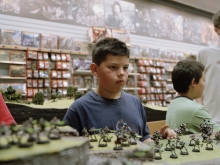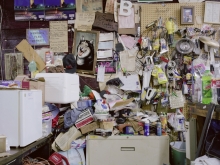Brian Ulrich
Copia Dark Stores
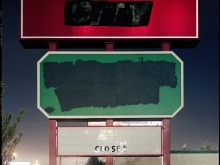





















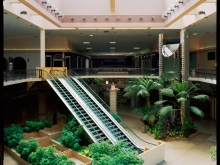





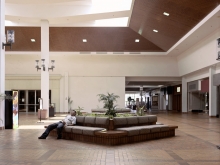

This series, is part of Ulrich's larger project „Copia" (Latin: plenty) which, since 2001, explores not only the everyday activities of shopping, but the economic, cultural, social, and political implications of commercialism and the roles we play in self-destruction, over-consumption, and as targets of marketing and advertising. It was George W Bush's call to patriotism in 2001 after 9/11 not to allow geoplitical uncertainties to derail domestic consumption, that triggered Ulrich in examinig this request visually. Ulrich started photographing in shopping malls, the epicentre of American Consumption, exported into the whole world. As Ulrich continued documenting malls and also thrift stores where much of the lower social classes shop, the economy turned in on itself dramatically leading to closures of many malls in the Unites States.
'Dark stores', 'ghostboxes' and 'dead malls' are retail industry terms for emptied, vacant and dying retail stores, big-boxes and malls. Ulrich started photographing these mostly at night with a large format analogue camera. Ulrich ironically makes the dead malls look like remannts of a once grand cultural place, or grand monuments of the past – visually inscribing these spaces with something they probably never had in the first place. Ulrich's images also formally echo and have continued to develop the photographic style of the so-called new topographics of Lewis Baltz, Stephen Shore or Bernd and Hilla Becher. Interestingly, some of the dead malls Ulrich has photographed, were photographed by Stephen Shore when they opened in the early 70's. It is like coming full circle and Ulrichs ongoing project is an important addition to the American history of the documentary, like for example, Garry Winogrand's record of urban economic expansion after WWII
Had there been photography in the Renaissance Ulrich would have undoubtedly been one of the masters. Light, classical formal composition and colour are central to Ulrichs images. This is evident from the beginning of his early work. His portraits, daily scenes in malls and thrift stores and his most recent work are just as much a series as they are very singular images. His work never criticises obviously or openly by making fun of his subjects or objects, rather he intelligently and sensitively uses the camera and his knowledge of the history of imagery to create an informed view of the contemporary moment both in art and in society.














